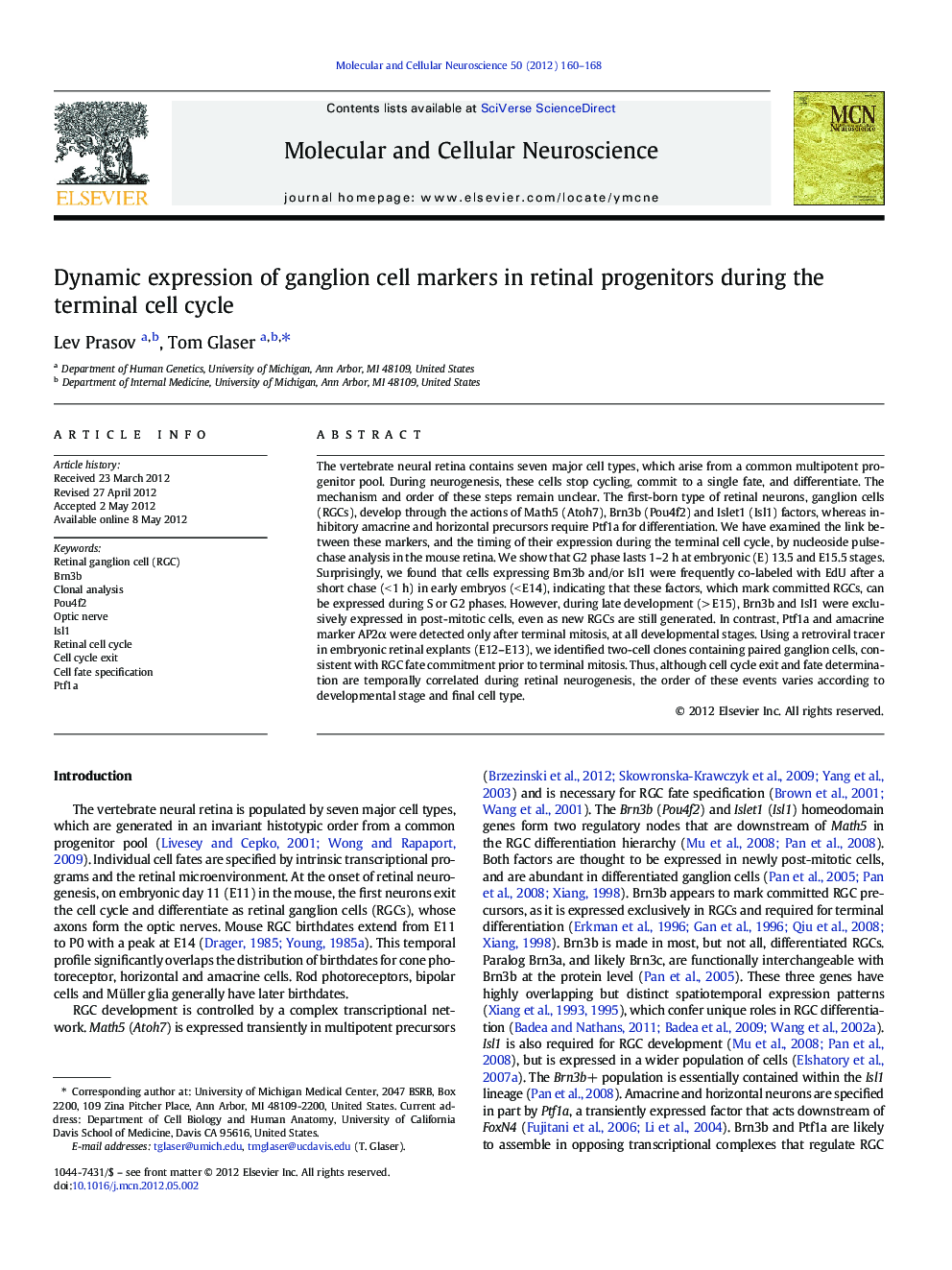| Article ID | Journal | Published Year | Pages | File Type |
|---|---|---|---|---|
| 2198627 | Molecular and Cellular Neuroscience | 2012 | 9 Pages |
The vertebrate neural retina contains seven major cell types, which arise from a common multipotent progenitor pool. During neurogenesis, these cells stop cycling, commit to a single fate, and differentiate. The mechanism and order of these steps remain unclear. The first-born type of retinal neurons, ganglion cells (RGCs), develop through the actions of Math5 (Atoh7), Brn3b (Pou4f2) and Islet1 (Isl1) factors, whereas inhibitory amacrine and horizontal precursors require Ptf1a for differentiation. We have examined the link between these markers, and the timing of their expression during the terminal cell cycle, by nucleoside pulse-chase analysis in the mouse retina. We show that G2 phase lasts 1–2 h at embryonic (E) 13.5 and E15.5 stages. Surprisingly, we found that cells expressing Brn3b and/or Isl1 were frequently co-labeled with EdU after a short chase (< 1 h) in early embryos (< E14), indicating that these factors, which mark committed RGCs, can be expressed during S or G2 phases. However, during late development (> E15), Brn3b and Isl1 were exclusively expressed in post-mitotic cells, even as new RGCs are still generated. In contrast, Ptf1a and amacrine marker AP2α were detected only after terminal mitosis, at all developmental stages. Using a retroviral tracer in embryonic retinal explants (E12–E13), we identified two-cell clones containing paired ganglion cells, consistent with RGC fate commitment prior to terminal mitosis. Thus, although cell cycle exit and fate determination are temporally correlated during retinal neurogenesis, the order of these events varies according to developmental stage and final cell type.
